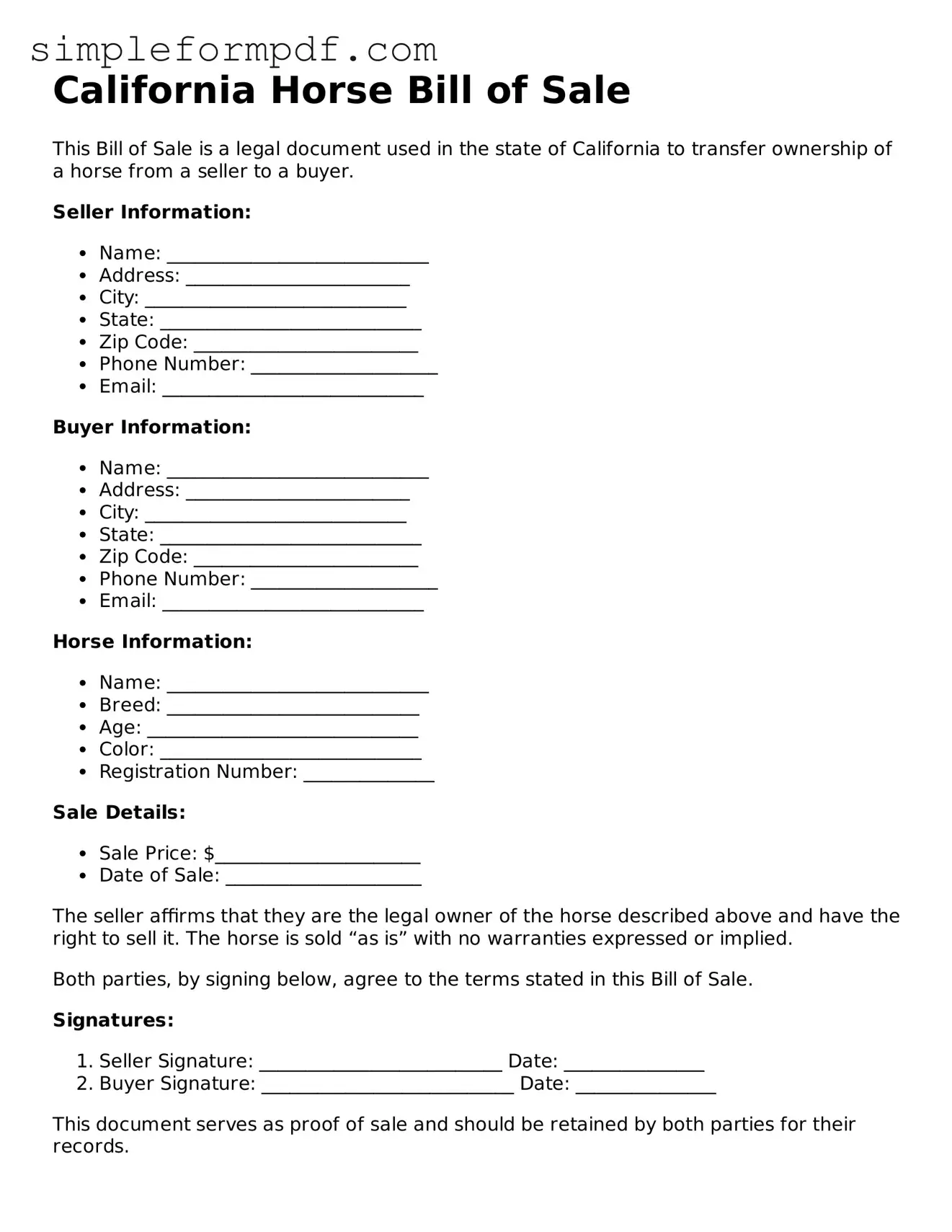California Horse Bill of Sale
This Bill of Sale is a legal document used in the state of California to transfer ownership of a horse from a seller to a buyer.
Seller Information:
- Name: ____________________________
- Address: ________________________
- City: ____________________________
- State: ____________________________
- Zip Code: ________________________
- Phone Number: ____________________
- Email: ____________________________
Buyer Information:
- Name: ____________________________
- Address: ________________________
- City: ____________________________
- State: ____________________________
- Zip Code: ________________________
- Phone Number: ____________________
- Email: ____________________________
Horse Information:
- Name: ____________________________
- Breed: ___________________________
- Age: _____________________________
- Color: ____________________________
- Registration Number: ______________
Sale Details:
- Sale Price: $______________________
- Date of Sale: _____________________
The seller affirms that they are the legal owner of the horse described above and have the right to sell it. The horse is sold “as is” with no warranties expressed or implied.
Both parties, by signing below, agree to the terms stated in this Bill of Sale.
Signatures:
- Seller Signature: __________________________ Date: _______________
- Buyer Signature: ___________________________ Date: _______________
This document serves as proof of sale and should be retained by both parties for their records.
